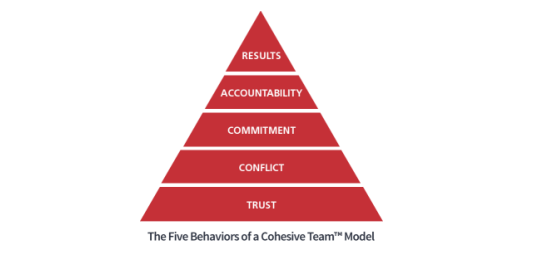
Cultivate Empathy To Build Stronger, Happier Teams
Did you know horses can help you tap into and fine-tune your empathy? In fact, when horses and humans spend time together, an “emotional transfer” occurs, research from Italy reveals. Specifically, researchers found that humans and horses couple their heart rate variability — a measure of the time between each heartbeat — which “subsequently increased the similarity in the way both perceive and experience their common world”. When cultivated in teams, this empathetic connection — the ability to understand and share the feelings of others — can also create a collective sense of psychological safety, which helps people feel more confident and comfortable at work. In turn, wellbeing, trust, and productivity goes up — as 85% of employees with empathetic work cultures recently confirmed in an EY survey.
Genuine connections require authenticity
Empathy, although crucial to build genuine human connections, should always be authentic to be successful. Otherwise, people will sense you’re being fake, and put up walls. Horses, for example, are extremely sensitive to energy. They each have their own individual needs and emotions, and to truly connect with them, you have to adjust your approach based on the unique cues and signals they put out. This means empathy isn’t one-size-fits-all. To apply this lesson to your team, it’s important not to use the same cookie-cutter language in every interaction. Rather, actively listen to what the other person tells you, and take care to formulate a suitable response that shows you care about their thoughts, feelings, and situation.
Empathetic employees are happier, healthier
Empathy not only helps you develop deeper bonds with team members, but also helps you establish a broader, empathetic company culture that supports genuine connections between employees. Research shows that employees are happier, healthier, and more satisfied in workplaces that value empathy. In one study, colleagues who demonstrated “compassionate love” — defined as “feelings of affection, compassion, caring, and tenderness for others” — over a sixteen-month period had “less emotional exhaustion, less absenteeism, better teamwork, and higher satisfaction” as a result. This was found to be true across seven industries from healthcare and finance to real estate. “Employees who felt free to express care, affection, and compassion for one another were more satisfied with and committed to the organisation”, the researchers found.
Incorporate empathy into your brand identity
If you’re serious about infusing empathy into your company culture, you can also incorporate this message into your overall branding strategy and identity. This makes customers aware of the positive, human-centered values you stand for — which is important since 60% of customers think brands today lack humanity, while 78% also say they’re loyal to brands that treat them as individuals. Also, keep in mind that consistent brand presentation across all platforms can increase revenues by up to 23%. That means your website design, along with your logo and social media content, for example, should effectively reflect your empathetic brand identity. With the right word choice, design, colours, and visuals, all your marketing materials can successfully communicate your values and leave a lasting impression on customers who crave brand authenticity now more than ever.
Empathy exercise to bring teams closer together
In addition to working with horses, appreciation circles are a useful group empathy exercise that give your team the opportunity to develop meaningful connections, express their emotions, and demonstrate care and appreciation for others. In these sessions, each person can talk about the specific action, behaviour, or quality they value most about another team member. A great opening sentence to kick things off with is: “What I appreciate about you, Sally, is…”. Once one person has had their go, they can choose who should go next, or someone can volunteer. Encourage employees to be as detailed as possible to make these interactions as impactful and uplifting as they can be.
When empathy is cultivated in the workplace, everyone benefits. Leaders develop stronger connections with their teams and more easily win their trust and loyalty, while team members also become happier, more satisfied, and more engaged at work. These improvements also reflect in the quality of their output. When employees feel comfortable and supported, they’re more likely to give their job their all and take the risks required to be creative and innovative.
Article contributed by Nina S














